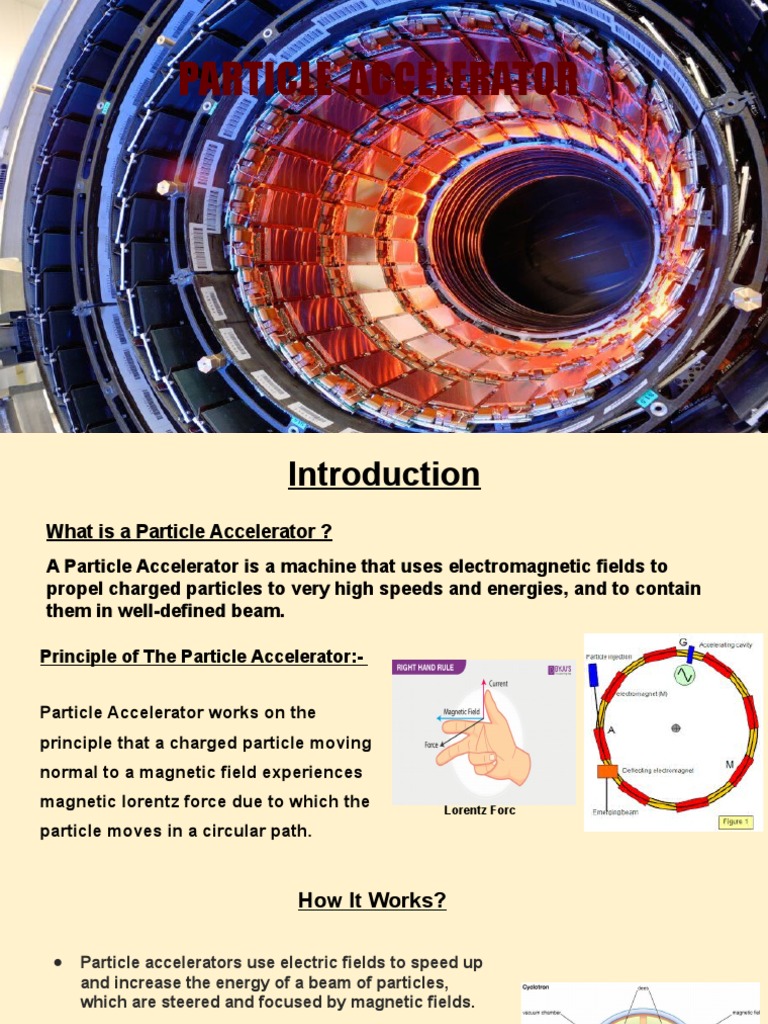Particle accelerators serve as the modern-day crucibles of fundamental physics, where the building blocks of matter are introspectively examined under extreme conditions. These sophisticated instruments, often likened to colossal cosmic engines, propel particles to prodigious speeds that flirt with the velocity of light. By delving into the intricate machinations within these accelerators, one can appreciate how they not only unravel the mysteries of the universe, but also conjure metaphors that resonate deeply with human curiosity and ambition.
At the core of a particle accelerator’s operation lies the fundamental principle of acceleration. Imagine, if you will, a race car at the starting line, engines revving, bursting forth at full throttle. Similarly, particles such as protons and electrons are injected into the accelerator, where they are coaxed into an exhilarating dance within magnetic and electric fields. The goal is to impart kinetic energy, allowing these minuscule entities to attain unprecedented momentum. This process resembles a meticulously choreographed ballet in which each dancer—the particles—must harmonize with the forces that govern their movement.
Particles traverse vast distances within the accelerator, often within circular or linear pathways designed to maximize their energy gains. In circular accelerators, like the Large Hadron Collider (LHC), particles are propelled along a closed loop. As they spiral around this path, they are subjected to an array of magnetic fields that continuously steer and accelerate them. This scenario is not unlike a cosmic carousel, where particles, as gallant steeds, orbit the center, forever under the watchful gaze of the surrounding forces.
When the particles reach their zenith of speed—often exceeding 99.99% of the speed of light—they are meticulously synchronized. At this moment, accelerator physicists orchestrate collisions, akin to the collision of two stars in a distant galaxy. These impacts are paramount as they enable scientists to probe the fabric of reality, disclosing particles and forces that are otherwise imperceptible. The resultant collision can create a plethora of ephemeral particles, a fleeting snapshot of the quantum universe’s myriad possibilities.
Upon collision, particles do not merely scatter; they undergo transformation. The energy released during these high-velocity clashes is governed by Einstein’s iconic equation, E=mc², which intriguingly posits that energy and mass are interchangeable. In particle physics, this principle is emblematic of the alchemical nature of particles, wherein energy can transmogrify into mass, giving rise to new, exotic particles that decay almost instantaneously. Such transformations are emblematic of life’s constant evolution and the transient beauty that exists within the cosmos.
One of the most captivating destinations of these high-energy collisions is the production of Higgs bosons, often dubbed the ‘God particle.’ Just as the Higgs field permeates the universe, providing mass to fundamental particles, so too do the accelerators facilitate the exploration and validation of this paradigm-shifting concept. The pursuit of the Higgs boson was heralded by many as the Holy Grail of particle physics, a testament to humanity’s relentless quest for knowledge and understanding.
Moreover, particle accelerators can also be seen as gateways to new dimensions of understanding. By creating particles that exist only for infinitesimal fractions of a second, these machines allow physicists to study phenomena that range from quark-gluon plasma—a state of matter prevalent just after the Big Bang—to supersymmetric particles that could upend the standard model of particle physics. Each fleeting particle observed carries with it the weight of curiosity, and a promise that beneath mundane matter, a universe brimming with potential lies wait.
Beyond their scientific endeavors, particle accelerators also possess potent implications for practical applications. The synchrotron radiation emitted when charged particles are accelerated offers invaluable tools in medicine, materials science, and nanotechnology. Academic institutions and industries utilize this radiation to investigate the atomic structure of materials—essentially peeling back the layers of existence akin to revealing the printed secrets of a hidden manuscript. Innovations such as medical imaging and cancer therapies have garnered immensely from these studies, showcasing the symbiotic relationship between fundamental research and societal progress.
Despite their immense scale and complexity, particle accelerators embody a shared human endeavor—an ambitious voyage to unveil the cosmos’s secrets. These towering structures of steel and superconductors are an invitation to explore questions once relegated to the realms of philosophy: What is the nature of reality? What forces bind the universe together? Each experiment conducted within these accelerators serves as a beacon of hope, pushing the boundaries of human understanding in a relentless quest for enlightenment.
In conclusion, particle accelerators embody the epitome of modern scientific inquiry, an exquisite amalgam of intellect, ambition, and discovery. Through their intricate mechanisms, particles are transformed, revealing an array of phenomena that traverse the boundaries of our understanding. They serve not only to propel particles at mind-boggling speeds but also to propel humanity’s perennial quest for knowledge, illuminating the dark corners of the universe with the flicker of newly discovered truths.












